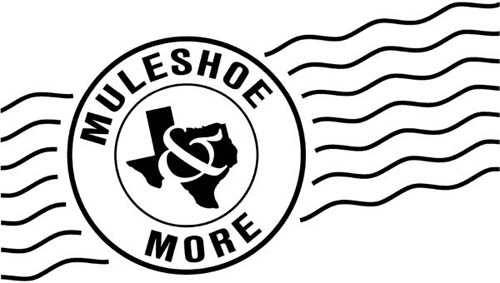
The
Remarkable
Stories
Behind the
Naming of
Texas Towns
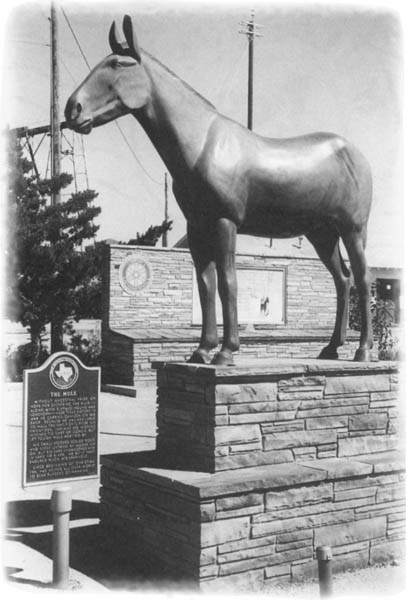
The National Mule Memorial in downtown Muleshoe.
Courtesy of Ray Miller.

The
Remarkable
Stories
Behind the
Naming of
Texas Towns
Bill Bradfield and Clare Bradfield

Muleshoe & More
Copyright 1999 by William H. Bradfield.
All rights reserved. This book, or parts thereof, may not be reproduced in any form without permission of the publisher.
Printed in the United States of America.
Gulf Publishing Company
Book Division
P.O. Box 2608  Houston, Texas 77252-2608
Houston, Texas 77252-2608
10 9 8 7 6 5 4 3 2 1
Library of Congress Cataloging-in-Publication Data
Bradfield, Bill, 1927
Muleshoe and more : the remarkable stories behind the naming of Texas towns / Bill Bradfield and Clare Bradfield.
p. cm.
Includes bibliographical references and index.
ISBN 978-0-88415-865-3
1. Names, GeographicalTexasAnecdotes. 2. Cities and townsTexasAnecdotes. 3. TexasHistory, LocalAnecdotes. I. Bradfield, Clare. II. Title.
F384.B73 1998
917.64003dc21
98-27975
CIP
Preface
Welcome to the world of Texas town names. The study of place names has a specialized name of its owntoponymy (tah-PAHN-uh-mee)and theres no better place to sample it than Texas, a fertile field because of the states immense size and variety. You will find Muleshoe & More to be a quick and lively reference guide with an A-to-Z listing of towns. Be warned, however, that more careful exploration of these pages could turn you into a Texas toponymic expert in your own right.
The Texas map, like the states broad landscape, offers great contrasts, exemplified by the intermingling of languages and cultures that goes back to earliest Texas history. Most of the towns were founded more than 100 years ago, and many of their names originated much like those of towns elsewhere:
Borrowed namescommunities named for towns or cities in other states or countries. Family namesplaces named to honor individuals or families, among them war heroes, public officials, early settlers, postmasters, storekeepers, or railroad engineers. Descriptive namesnames describing the areas in which the towns are located or chosen simply because they sound pleasant. Geographic namesnames taken from rivers, lakes, mountains, and other landmarks. Botanical namesnames of trees and other plant life prominent when the towns were settled.
But these broad categories omit the many Texas towns with names derived from cultural sources including the Bible and religion, popular and classic literature, and mythology. Nor do they reflect the intermixture of languages that results, for instance, in three towns named Sweetwater: the Nolan County seat with the English name; the Nueces County town (Agua Dulce) with a Spanish name, and the Wheeler County town (Mobeetie) whose name comes from a Native American language.
Bigfoot and Whon, although named for persons, have monikers that do not quite fit the pattern of family names. Thats surely true of Topsey, a name taken not from one of the residents but from his favorite mule.
And how do you classify Ding Dong in Bell County? Bug Tussle? Gun Barrel City? Pep? Dime Box? Cut and Shoot? Bebe? Domino? Each has its own unique story.
Preferred pronunciations are shown for town names that are often pronounced incorrectly, such as Mexia and Refugio. These pronunciations, appearing as phonetic respellings, were published previously in our Texas Towns From A to Z Pronunciation Guide. The stressed syllables are indicated by capital letters. Population figures shown for the towns are current estimates obtained from the Texas State Data Center and other sources in 1998. The postmarks that illustrate the text come from Texas post offices, which have played no small role in the naming of Texas towns.
Invariably, the persons we approached while working on this book went out of their way to give every possible kind of information we sought, and offered it with courtesy and kindness. Among these were postmasters, librarians, newspaper editors and reporters, genealogists, Chamber of Commerce managers and staffers, city and county officials, and officers of town and county historical societies. We are grateful to one and all.
Our gratitude goes also, for many and varied reasons, to Laurel Laurentz, Larry Howell, F. E. Ab Abernethy, Robert M. Thomas, Clay Bradfield, and Elizabeth Hedstrom.
A
ABILENE
West central Texas Taylor County 117,061
C. W. Merchant named Abilene, founded in 1881, after Abilene, Kansas. He and other ranchers marketed cattle in the Kansas town and hoped its Texas namesake would become equally important. The ranchers and land speculators picked a townsite on the new Texas & Pacific Railway line, and at auction more than 300 lots were sold in two days. In 1883 citizens voted to incorporate the town, and Taylor County residents selected Abilene as the county seat.
ACE
Southeast Texas Polk County 40
This settlement dates back to the 1830s and was known for decades as Smithville. Its post office closed in 1871 and reopened in 1915but this time Washington postal officials wouldnt accept Smithville as its name, since a Smithville post office already existed in Bastrop County. Instead, they gave both post office and town the name Ace, for Postmaster Asa Ace Emanuel.
ADDISON
North central Texas Dallas County 11,800
Addison, a burgeoning suburb of Dallas in the 1980s and 1990s, began in 1904 as a post office at a St. Louis Southwestern Railroad depot. Its name derives from the postmaster, Addison Robinson. Addison remained one of Dallas Countys smallest towns for a half century, but from the 1970s on the suburb experienced full-scale metropolitan development. Since the early 1980s Addison Airport has ranked as the third busiest general aviation airport in the nation.
AFTON
Northwest Texas Dickens County 15
This community was called Beckton early in the 1890s and Cottonwood late in the 1890s. A Cottonwood post office already existed in Callahan County, so, according to one West Texas historian, the name Afton was suggested by Mrs. R. L. Sitton, who had moved here from Afton, Oklahoma. Another source contends that a beautiful stream flowing through town led schoolteacher Myra Kelly to propose the name of the river in the old song Flow Gently, Sweet Afton.
AGUA DULCE
Gulf Coast Nueces County 871 ah-wuh DOOL-sih
Agua Dulces Spanish name, meaning sweet water, derived from a Nueces County creek. A settlement developed here around the 1890s, and oil and gas were discovered in this vicinity in the late 1920s.
ALAMO
Next page

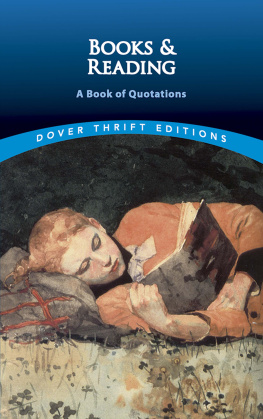
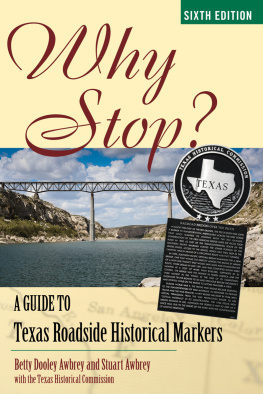


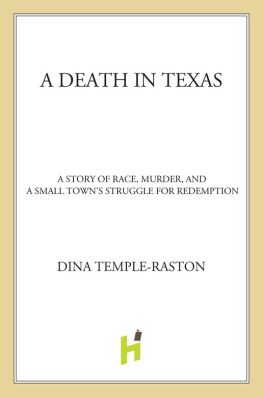




 Houston, Texas 77252-2608
Houston, Texas 77252-2608